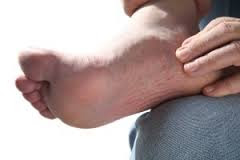Morton’s neuroma is a painful condition of the foot usually
affecting the area between the third and fourth toes. Patients usually complain as if they are
stepping on a pebble in their shoe. This is due to a thickening of the tissues
around the affected nerve, because of constant irritation, pressure or injury to
the nerve of the toes, which can cause sharp burning pain around the balls of
the foot.
Symptoms:
- A feeling as if there is a pebble in your shoe.
- Numbness or tingling sensation in your toes.
- Burning pain in the ball of your foot that can radiate to your toes.
Who are at risk?
- Wrong footwear– wearing high heels is an obvious risk, not only does it cause Morton’s neuroma, high heels can cause all sorts of foot problems.
- Sports that are stressful to the feet like sprinting, running, foot ball, etc. Also, certain sports that require the use of tight shoes like rock climbing or skiing.
- People with foot deformities like flatfeet, high arches, bunions and hammertoes have higher risk of developing this type of neuroma.
Treatment
The treatment of Morton’s neuroma depends on the severity of
symptoms, conservative treatments are
usually given as an initial approach.
Non-invasive treatments
- Foot pads and arch support are initially used to reduce pressure to the nerve.
- Injection of steroids into the affected area can be helpful for some patients.
Invasive treatments
- Decompression surgery. This is done by removing some structures surrounding the nerve growth like ligaments to relieve pressure.
- Removal of the nerve is necessary if all treatment fail to provide relief. Unfortunately, this may lead to permanent numbness to the affected toes.



